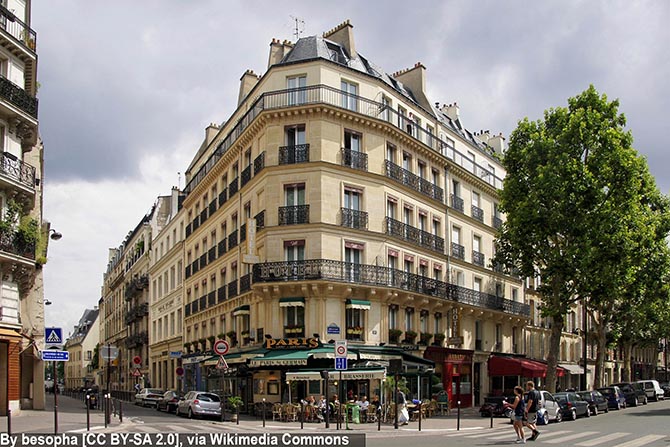The French capital can be called a luxurious open-air museum. This amazing city is a witness to the bright events that influenced both the change in the appearance of the city itself and the course of the history of the entire continent. Not only museums, but also the streets of Paris keep evidence of the life of monarchs, generals, geniuses of architecture, painting, cinema and ordinary Parisians. And what evidence! Even simple walks through the elegant squares and elegant streets of Paris allow you to look into different eras of rich French history, admire the masterpieces of architecture, and remember many great people whose names are inscribed in the history of Paris. And if these walks are accompanied by fascinating audio guide stories, they become even more informative and inspiring!
Where to take a walk in Paris with benefit and pleasure? Which streets and squares will allow you to make a real journey through time? What places will make you freeze in admiration before the architectural grandeur and beauty? Which streets in Paris are the best places to take pictures? Let’s go for a walk through the streets and squares of the city together, so as not to miss anything.
Elegant Parisian Rivoli street
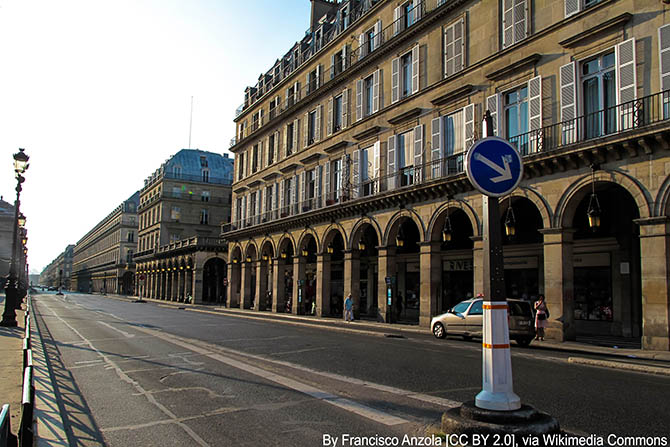
Rue de Rivoli is a kind of axis of Paris: it stretches for over 3 kilometers along the first bank of the Seine from Place de la Concorde to the iconic Marais quarter, which will be discussed below. Rivoli (or rather, its oldest northern section from the Place de la Concorde to the Palais Royal) owes its appearance to Napoleon and the architects Percier and Fontaine. And the name is the Italian commune in the province of Verona, where in 1797 Napoleon won one of the first victories over the Austrian army. The attractions of this section of Rivoli are the Tuileries Garden and the Louvre on the south side of the street.
Along the north side there are old buildings, on the first floors of which, behind slender Italian-style arcades, expensive boutiques, souvenir shops and cafes are hidden. They stretch to the Place of the Pyramids, frame it, becoming the backdrop for the gilded sculpture of Joan of Arc, sitting on a horse. According to legend, it was at this place that the heroic Jeanne was wounded by the British during the storming of Paris. And the square itself is a memory of the Egyptian campaign of the little corporal and his troops.
Walk a little forward and to the left, in the depths you will see the Comedie-Française theater in the Palais Royal – a palace that once belonged to Cardinal Richelieu, known to every Russian schoolchild from Dumas’ books.
Farther east, deep into the Marais district, Rue Rivoli was extended by the representatives of the Bourbons, Charles X and Louis-Philippe. On the border with the quarter, the graceful Gothic tower of Saint-Jacques on the site of an old church will not go unnoticed. On houses 206 and 210 there are memorial plaques informing tourists that our compatriots Leo Tolstoy and Ivan Turgenev lived there.
In addition to fans of architecture and history, Rivoli is a must-see for shopping lovers: the huge shopping center “Karusel”, small shops and outlets will delight you with affordable prices.
Champs Elysees – the famous promenade of Paris
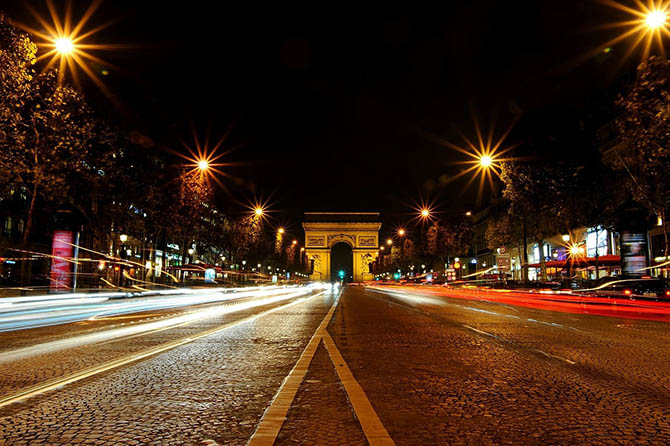
The Champs Elysees, or Elysium in ancient Greek mythology, is a place of eternal bliss without ailments and suffering, where heroes end up after death. The history of the Parisian Chance-Elise began in the 17th century, when, on the orders of Marie de Medici, a boulevard was laid out to the west of the Tuileries instead of a swampy area. The heyday of the main thoroughfare of Paris happened under Napoleon. After the victory at Austerlitz, the Arc de Triomphe was laid on the hill of Chaillot, and the boulevard was extended to a landmark place called the Place de la Star.
Today, the Champs Elysees is almost 2 km of space connecting many of the iconic places in Paris. A military parade on July 14 and a stage of the Tour de France bicycle race take place along the highway.
At the beginning of it, from the Place de la Concorde to the Round Square (Rond-Point), Parisian Elysium is a pedestrian park area divided into squares by transverse alleys: the square of the Ambassadors (where diplomats lived), the Champs Elysees in front of the palace of the same name, the residence of the French presidents, the Marigny square with the famous theatre, the large square of the Celebrations and Ledoyen with one of the oldest Parisian restaurants.
Then the roadway begins with wide sidewalks running along the shops of world brands, airline offices, cinemas, car dealerships. Tourists from Russia are often attracted by signs of the Rasputin restaurant and the Lido cabaret. However, prices in the “paradise” can hardly be called democratic.
Majestic Square of the Star (Charles de Gaulle)
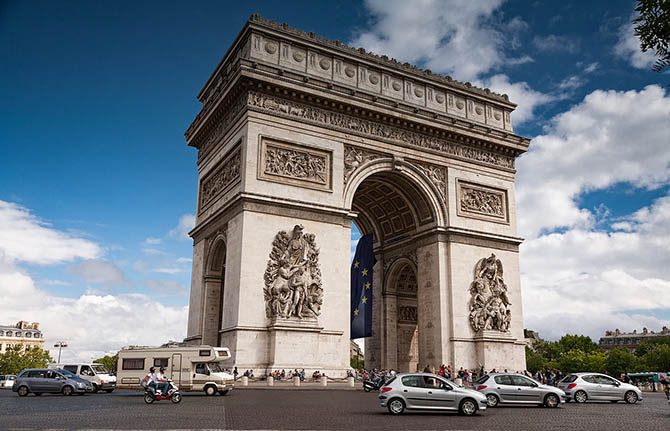
Etoile Square, or Charles de Gaulle Square, or Star Square is not among the royal ones. But from this it does not cease to impress with its monumentality and grandeur. This is the same square on the hill of Chaillot, where the Chance-Elise is led and where the Arc de Triomphe was erected. The area is compared with a star because of the rays of the streets diverging from it. The main attraction is the Arc de Triomphe – evidence of the victories of Emperor Napoleon and the memory of his commanders and ordinary soldiers. The Tomb of the Unknown Soldier, the names of military leaders on stone slabs, a small museum of the history of the building itself – that’s what you can see here. It is also worth admiring the star square itself from above, going up to the Arc de Triomph observation deck and looking at how straight streets and avenues of Paris rush from the square in different directions. What stories are associated with this place, what to pay special attention to – we will tell about all this in the audio tour “Triumphal Path” (the Arc de Triomphe is the end point of the route).
Place Trocadero
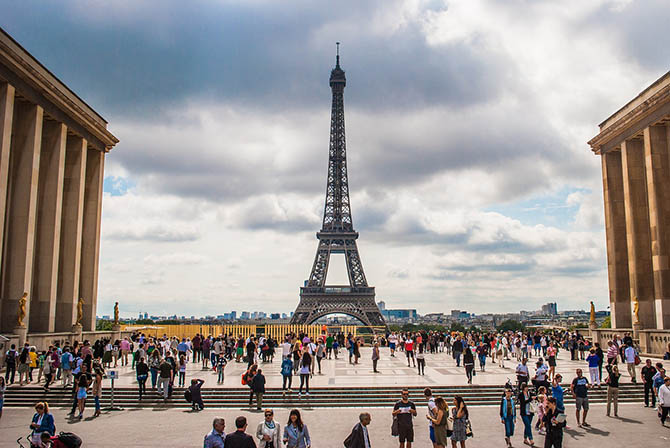
Trocadero Square, which is located on the hill of Chaillot, bears the name of the Spanish fort – another testament to the success of the French army. There is also the Palace of Chaillot. The palace complex, completed in the 30s. XX century, is famous not only for the esplanade between two semicircular pavilions, but also for fountains, a regular park, an impressive night illumination of the ensemble and Museums inside. And the view of the Eiffel Tower, which opens from here, has become a classic plot in the image of the tower in photos, paintings and movies.
Place de la Bastille
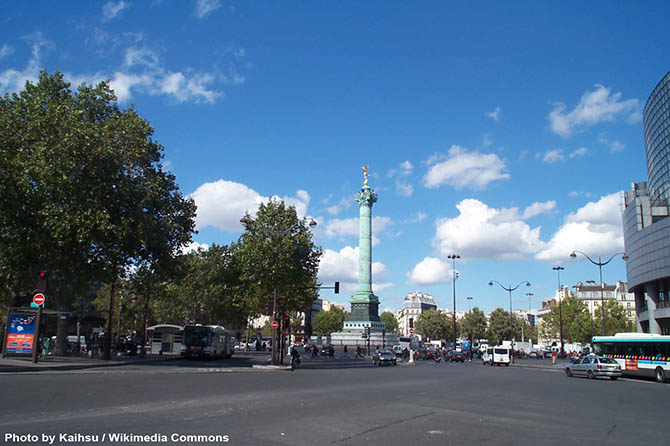
The Bastille is also known to us from the French classics. This is a 14th-century fortress for the maintenance of state criminals, which was destroyed by angry Parisians during the French Revolution. The rest was sorted out over the next 3 years. In fact, the authorities themselves made plans to demolish the bastion and lay out another royal square, but they did not have time to put the plan into execution.
Now several Parisian boulevards converge to this place. The tradition of folk festivals has been preserved. At the end of the XX century. for the 200th anniversary of the storming of the Bastille, the building of the new Opera was built.
Tertre Square
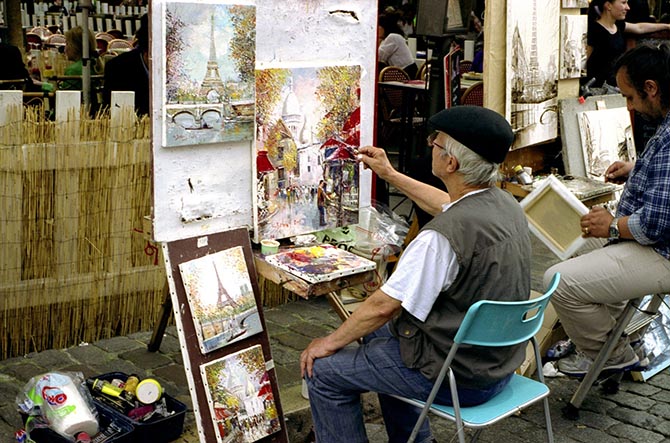
Walking around Montmartre, be sure to look into its heart – Tertre Square. Once it was here that the first city hall of Montmartre was located. The square itself probably already existed in the 14th century, when a large abbey was located here, on top of the hill. Later, many painters lived or visited in the vicinity of Tertre Square, and to this day the place is considered the center of art. Street artists exhibit their work here, and they can also make a portrait to order. Nearby is one of the area’s most visited attractions – the famous Sacré Coeur (La basilique du Sacré-Cœur de Montmartre), or the Basilica of the Sacred Heart. And in the restaurant “Mother Catherine” in house number 6 on the square, according to legend, the French word with Russian roots “bistro” was born. The restaurant itself was opened by Catherine Lemoine back in 1793!
Royal squares of Paris
Royal Place des Vosges (Vogues)
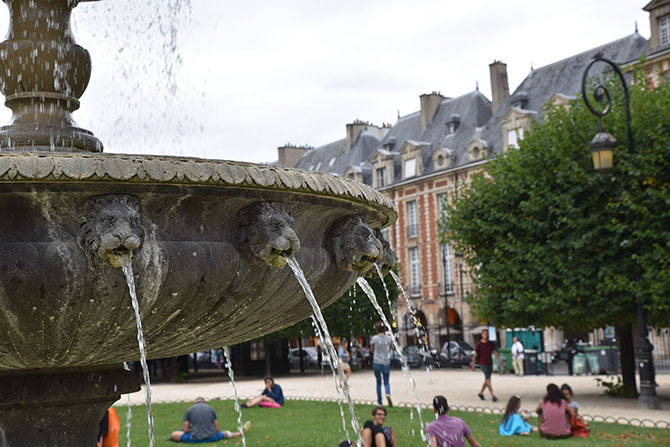
Place des Vosges (formerly Place Royale, Place Royale, Vosges) in the Marais is considered the oldest in Paris. This is one of the five famous royal squares – each of them was dedicated to a particular French king.
The construction of the square began under Henry IV, at the beginning of the 17th century. During the years of the French Revolution, the square was given this name in honor of one of the departments of France. The almost perfect square Place des Vosges is surrounded by buildings in the same style of red and gray stone. The pavilions of the King and the Queen stand out, in which the monarchs, however, never lived. However, many buildings boast famous residents, such as Louis XIII, Cardinal Richelieu, Victor Hugo (here is the writer’s museum), the faithful minister of Henry IV Sully (you can get to his palace through the arch from the square).
The lower floors of many houses are reserved for art galleries and shops. Fountains, lawns, linden alleys and a copy of the statue of Louis XIII destroyed by the revolutionaries make up the surroundings of a cozy old square.
Prince’s Square (Dauphin)
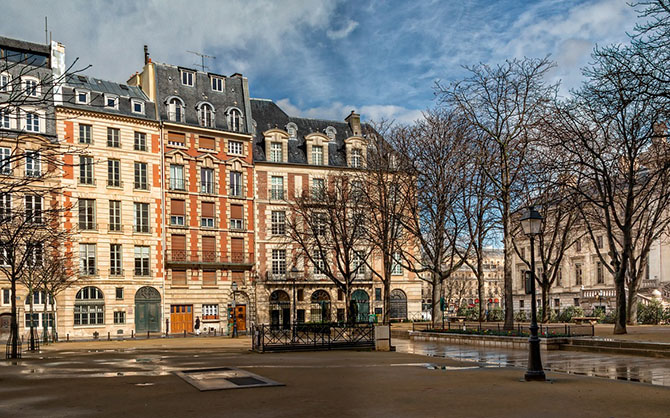
Place Dauphine (Prince’s Square) appeared on the island of Cite also by decision of Henry IV in 1607. He connected the island to the coast with the New Bridge, which, according to the idea, was supposed to go to the square, arranged at the very arrow. And Henry dedicated the square itself to his son, the future Louis XIII the Just. This is the reason for the name of Place Dauphine. The French called the heirs of kings Dauphins.
Pay attention to the Renaissance facades of these red brick houses, decorated with light sandstone. Some of them have not been reconstructed and have been preserved almost in their original form – for example, the houses that frame the exit to the New Bridge. It was these houses that surrounded the square at the very beginning of the 17th century. Today, this cozy, chestnut-tree-filled place on the western tip of the Cité is appreciated by romantics, lovers and connoisseurs of quiet, non-tourist places.
Place Vendôme
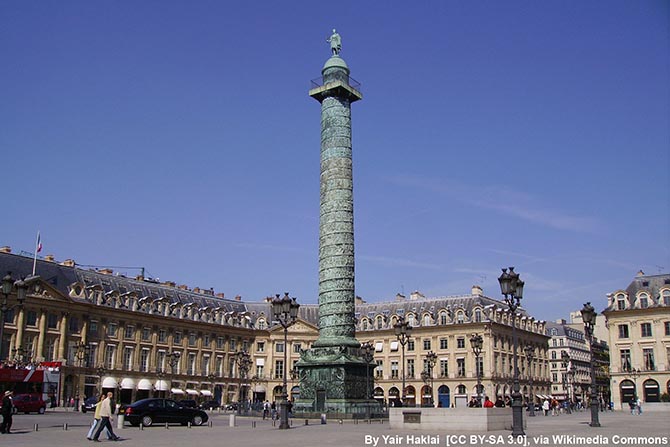
We will walk along one of the royal squares of Paris – Vendôme. She appeared on the map of Paris in 1699 in the 1st arrondissement north of the Tuileries. For travelers from Russia, this fact is not indifferent: the 44-meter column decorating the square is made, among other things, from melted down Russian trophies mined by Napoleon’s army near Austerlitz. The figure of the commander looks at the square from the very top of this pillar. The column and the square bear the name of the palace that once stood here, which belonged to the Vandom dynasty. Today, the place has been chosen by world-famous designers and jewelers.
Victory Square
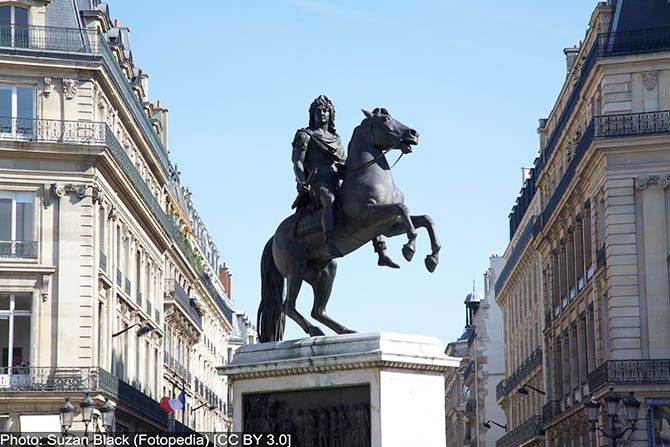
Rumor has it that the royal Place des Victoires was conceived by Marshal de La Feuillade, who wanted to curry favor with the king, just as a frame for the statue of Louis XIV. A small round area coped with this task. The monarch in the robes of the Roman emperor proudly sits on a horse. The pedestal under the 12-meter statue is decorated with two large bronze bas-reliefs of military history. Mansions with rounded façades, adorned with two-storey pilasters, located along the border of the square, complete the impeccable ensemble.
Place de la Concorde: a memory of the turbulent history of Paris
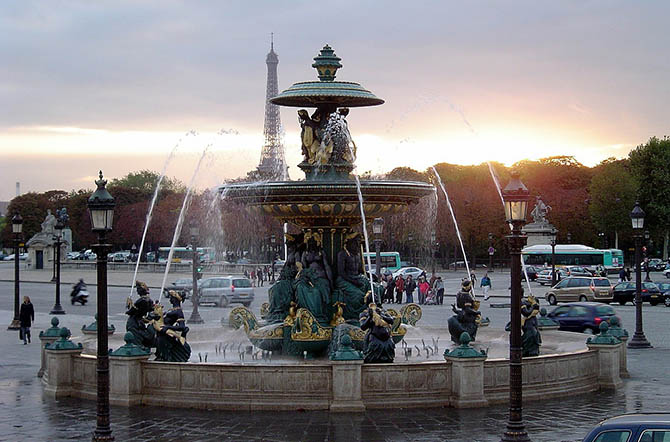
Place de la Concorde (formerly Place Louis XV, Place de la Revolution) is the most famous of the 5 royal squares in Paris. Its octagon is decorated with statues in honor of the cities of the 5th Republic and two Roman fountains, which symbolize the rivers and seas connected with France, and refer us to one of the buildings along the perimeter of the square – the Ministry of Marine and River Fleet. In addition to it, the building of the US Embassy, the palace of the Duke of Crillon, which was turned into an expensive hotel at the beginning of the 20th century, overlook the square.
The statue of Louis XV in the center of the square of the same name was replaced by a guillotine during the French Revolution. Its ideologists were executed here, as well as the grandson of Louis XV and his wife Marie Antoinette. After the decline of revolutionary sentiment in 1830, the square acquired its current name. And in 1831, the French authorities received a Luxor obelisk, one of the “needles of Cleopatra”, as a gift from the Egyptian ruler. The construction weighing more than 200 tons and 3 thousand years old was delivered from Africa for 2 years! It is it, and not the statue of the monarch, that adorns the center of the square.
Near the Place de la Concorde is the Tuileries Garden and the Orangerie Museum of Fine Arts. If the mentioned Rivoli street leads to the eastern part of the city, then the famous Champs Elysees depart from the square in the opposite direction.
The most colorful streets of Paris
Rue Rosier in the Marais
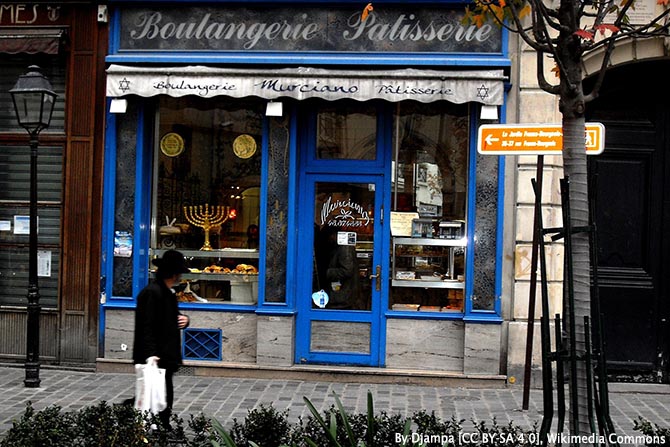
Today, rue des Rosiers is home to trendy boutiques, cafes and bars. But the district has not lost its reputation as the Jewish quarter (with the largest community in Europe). Jews from Spain and Portugal began to settle here as early as the 12th century. Then they were joined by their fellow tribesmen from Eastern Europe. Therefore, there are many shops and restaurants with kosher products in Mar, and the headquarters of the Jewish TV channel is also located here.
The name of the street, consonant with the Russian “rose”, is translated as follows: rose bushes grew along the fortress wall located here several centuries ago.
Cremieux: the most colorful street in Paris
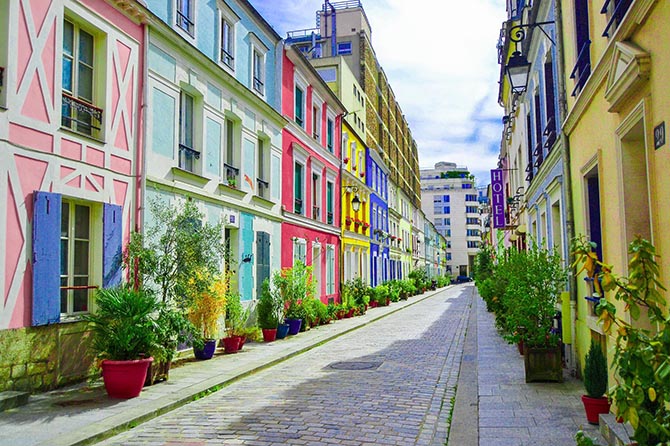
A small Crémieux street will not leave indifferent any tourist in Paris. Bright multi-colored houses, comfort and tranquility unexpected for a tourist center, charming pots of flowers… Ideal scenery for a colorful and unusual photo shoot in Paris!
Medieval Paris: Rue de la Huchet and Street of the Angler Cat
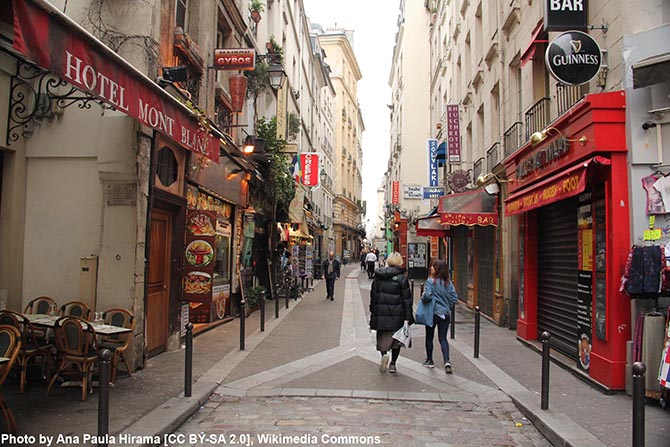
Pedestrian street Yuchet (Rue de la Huchette) is considered the oldest on the Left Bank of the Seine. There are always a lot of tourists wandering among the huge number of cafes, bars, jazz clubs and restaurants (especially Greek ones). Seething activity does not stop here day or night. Walking along Yushet, you can feel the pulse of modern life in the Latin Quarter. And the old houses, some of which have been preserved from the 15th-16th centuries, remind of the rich history and solid age of the street.
Another colorful street departs from Yuchet, taking us to medieval Paris. Its width does not reach even two meters! Not only is it considered the narrowest street in Paris, but it also has the unusual name of rue du Chat-qui-Pêche (rue du Chat-qui-Pêche). Probably, once there was a tavern and a shop under the sign “Cat Catching Fish”. Although, there is also a legend for tourists: supposedly a big black cat lived here, who knew how to fish in the Seine and brought it to the alchemist owner. And some say that the owner himself periodically turned into a cat. In general, a street with history!
Rue Lepic: the charm of Montmartre
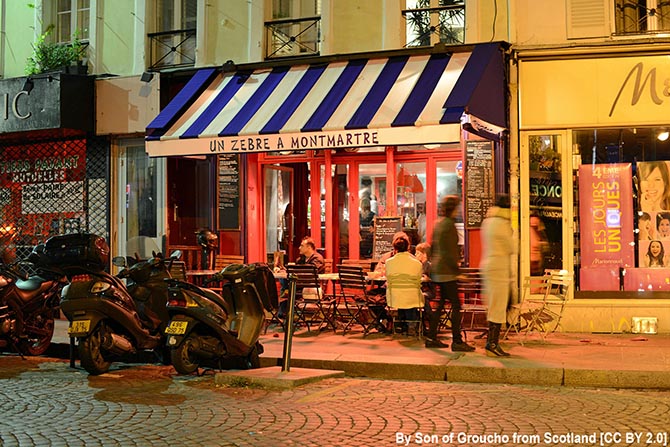
A walk along the rue Lepic, which starts from the Place Blanche and, meandering and dodging, rushes to the top of the Montmartre hill, will reward you with picturesque views, vivid impressions and interesting discoveries. Once this street (by the way, the longest in Montmartre!) was called Imperial. After all, it was laid on the orders of Napoleon Bonaparte, when there was no decent road to the top of Montmartre. The beginning of the street, coming from the Moulin Rouge, is the busiest part of it, with colorful cafes, bakeries, and shops. Here, in particular, the cafe “Two Mills”, known from the film “Amelie”, is located. But, the farther the street goes to the top of Montmartre, the more it moves away from the tourist bustle and surprises with the charm of the old, calm, rural Montmartre. And if along the way we remember the famous residents who are remembered by these houses (which we do in the audio tour of Montmartre), then the street will also open up to us from the bohemian side ….
Rue Vaugirard in Paris: in the footsteps of the Musketeers
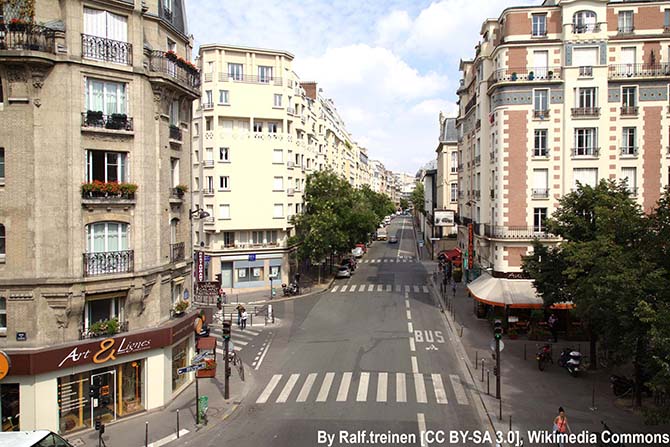
It was on this street, at 25, that Alexandre Dumas “settled” one of the “Three Musketeers” – the charming Aramis. This is the longest street of the capital (more than 4 km long) and one of the oldest: it is located on the site of a road built by the ancient Romans. At Vaugirard, 72 there is a monastery, near the walls of which the musketeers entered into a duel with the guards of the cardinal. And on the street is the Museum of Lost Things and the Institute of Louis Pasteur, the microbiologist who created the technology that taught his name (pasteurization).
Flower Quay (Quai aux Fleurs)
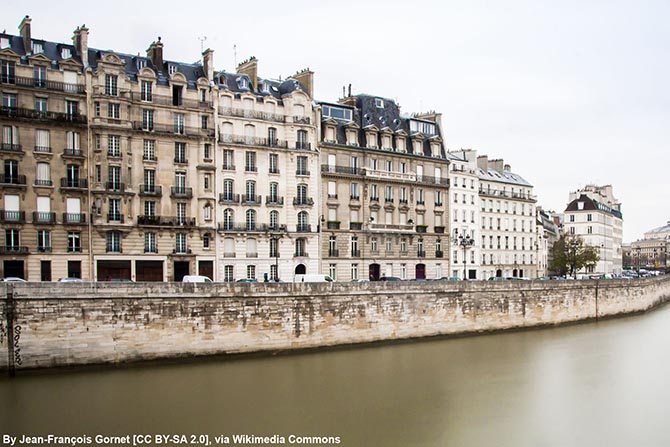
Walking along the picturesque embankment Haut-Fleur (Flower Embankment), admiring the beautiful baroque facades of old mansions, and perhaps looking into local cafes, do not miss house number 9. The memorial plaque reminds that famous lovers once lived here – Pierre Abelard and Eloise…
Boulevards of Paris
Parisian boulevards appeared on the site of defensive structures in the 17th-19th centuries. and became a symbolic space for social life in the capital. Former ramparts have turned into alleys for walking, “shopping” and entertainment. The most famous boulevards are located on the right bank of the Seine: Boulevard des Capucines, Italian, Montmartre and de la Madeleine.
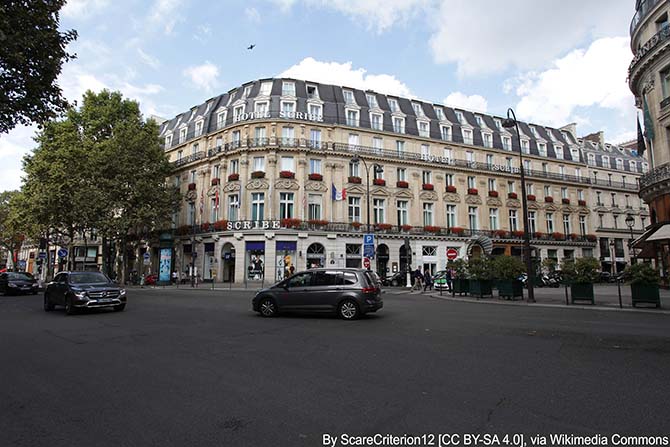
Boulevard des Capucines is decorated with the gardens of the monastery of the same name. We know the boulevard thanks to the world’s first screening of the Lumiere brothers, which took place in 1895 at 14. V. Roentgen, whose name has become a household name, worked at the same address. The oldest music hall “Olympia” is located in the house number 28. And in the house number 7 in the XIX century. georama was opened for viewing – a model of the earth of impressive size.
The Italian boulevard until 1914 was synonymous with luxury, fashion and vibrant social life. It is understandable: there was a theater (Italian, then Opera-Comic). Here, for the first time, the cobblestones were replaced with tiles and gas lighting was installed. The French nobility, creative people, foreign diplomats liked to gather in trendy cafes (“Tortoni”, “Rish”, “Paris”), which have not disappeared to this day. However, they were diluted with offices of financial and real estate organizations, lawyers’ offices.
Montmartre Boulevard – contrary to its name, is located away from the most famous hill of Montmartre. But still, its picturesque appearance fully conveys the spirit of this space.
Boulevard Madeleine. Let’s go back to the Parisian boulevards. Boulevard Madeleine is famous for the church of the same name, which was built for almost 90 years and, due to the turbulent history of the 5th Republic, almost became the Temple of Napoleon’s troops. Anyone can take a look at the magnificent interior. The boulevard is famous for its large Parisian Trois Cartier store, trendy cafes and restaurants, as well as … a public toilet in the Art Nouveau style. The interiors of this institution are also worthy of the attention of a tourist.
The attractions of Boulevard Montparnasse include the Museum of the District, the Observation Tower, the cemetery where famous Frenchmen are buried, the hostel where the creative intelligentsia rented apartments. It is in this area that the entrance to the Catacombs of Paris is located – the tunnels of Roman quarries, where millions of French people are buried on 11 hectares. Now the space belongs to the Carnavale Museum, and anyone can get into the Catacombs by purchasing a ticket.
Boulevard Saint-Germain today is a “mecca” of cafes, boutiques and restaurants, a shopping street that passes through 3 districts of Paris. This is one of the boulevards of Haussmann – the prefect of Paris, who actively rebuilt the city under Napoleon III. He destroyed a medieval district with a dubious reputation so that a place appeared on the map of the capital that the intelligentsia fell in love with: Balzac, Manet, Racine visited the cafe on Saint-Germain.
